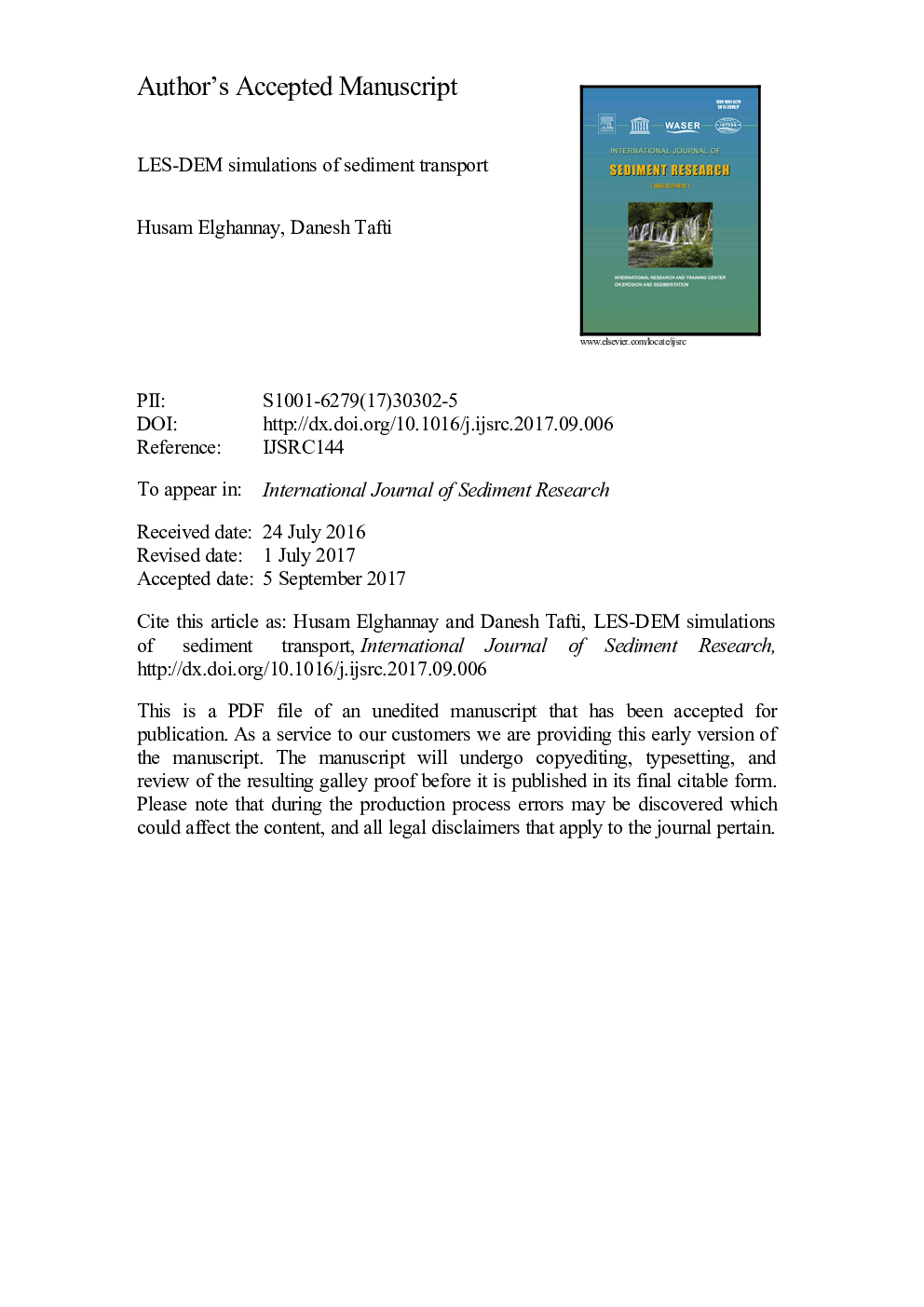| Article ID | Journal | Published Year | Pages | File Type |
|---|---|---|---|---|
| 8911084 | International Journal of Sediment Research | 2018 | 56 Pages |
Abstract
In this work, a fully-coupled Computational Fluid Dynamics (CFD) model and Discrete Element Method (DEM) are used to simulate a unidirectional turbulent open-channel flow over the full range of sediment transport regimes. The fluid and particles are computed on separate grids using a dual-grid formulation to maintain consistency and avoid instability issues. The results of coupling the dispersed phase to a multiphase flow solver that uses volume-averaged Navier-Stokes equations are compared to those obtained from coupling through drag to a single flow solver. The current work also examines the applicability and limitations of lumping particles as a representative particle to reduce the cost of simulations. Insight to the impact of different turbulent events to the entrainment of particles is also given. The simulation results of sediment transport from both coupling techniques show good agreement with empirical formulas in the bedload regime, but under-predict sediment transport in the suspended load regime. In the suspended load regime, using partial coupling, the rate of sediment transport was found to be under-predicted as compared to full-coupling. The deviation in results in the suspended load regime was found to increase with increases in the applied shear stress. Both coupling methods revealed the same effect on the friction factor where friction increases in the bedload regime and decreases in the suspended load regime reaching a maximum at the transition between regimes. This result is contrary to past studies which have shown a discrete jump in the friction factor at the transition. Lumping particles as representative particles is shown to reduce the simulation cost by more than a factor of 5 when using a scaling factor of 2. By doing a quadrant analysis on information obtained from particle and flow field results, it was found that most of the particles are entrained by more frequent sweep events.
Keywords
Related Topics
Physical Sciences and Engineering
Earth and Planetary Sciences
Geochemistry and Petrology
Authors
Husam Elghannay, Danesh Tafti,
